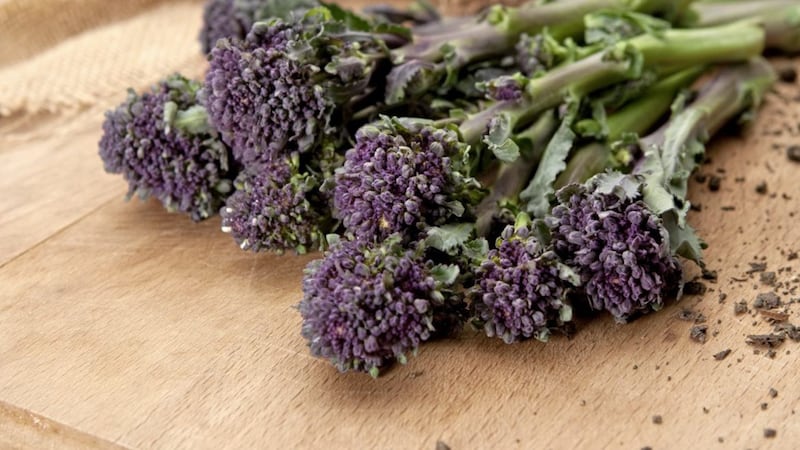BROCCOLI, cabbage, kale and sprouts are the stuff of many children’s nightmares and they don’t get too many adults salivating either. For vegetable growers, however, these are brassicas – a group of robust and dependable edible plants that are diverse in appearance and versatile in the kitchen.
Most members of this extensive family also tick the box marked ‘superfood’ – rich in iron, folic acid and all sorts of vitamins, though the digestible parts vary across species, from roots and leaves to stalks and flowers.
They all like common conditions and fall victim to similar pests and diseases so it’s best to grow different brassicas together if you can. This year, I’m growing purple sprouting broccoli alongside kohlrabi and kale in one bed.
Purple-sprouting broccoli is probably my favourite of all the brassicas. I’m not averse to calabrese – or ‘bog standard’ broccoli – but the purple-sprouting (and white-sprouting) varieties are especially tasty and grow over winter when little else is happening in the veg patch. Similar in taste and texture to asparagus, this hardy harbinger of spring stands three feet tall when its purple florets are harvested between February and April, having withstood everything nature threw at it over the harshest months.
Variety selection for purple-sprouting broccoli is made easy with names like ‘Early’ (harvest from February onwards) and ‘Late’ (March-April).
Once the preserve of peasants, kale, like broccoli, is enjoying a resurgence in popularity due to its nutritional properties. Kale too is hardy and even less susceptible to pests and diseases than other members of the notoriously tough brassica clan. And it even tolerates a bit of shade.
Sown direct, kale needs little encouragement in fertile, free-draining soil. The healthiest plants should be given space to grow with the thinnings used as salad leaves. It comes in black, curly and red varieties. ‘Redbor' produces beautiful burgundy-coloured, crinkled leaves whose colour intensifies as the temperatures drop. Nero di Toscana has deeply wrinkled, near-black leaves and often doubles as an ornamental.
You’ll not be surprised to hear that kohlrabi too is enjoying a surge in popularity. While it sounds exotic and looks a little odd too, in essence it is no different from broccoli and cabbage in the conditions it likes. Whereas with purple-sprouting broccoli the edible part is the young florets and for kale it’s the leaves, the most desirable part of kohlrabi is the swollen base of the stem, which is best harvested when golf-ball size. They can be sown from March onwards for early cropping or as late as mid-summer for winter harvesting. ‘Domino’ is a good early variety and ‘Kongo’ is fast growing and high yielding – both have earned the RHS’s Award of Garden Merit.
The common conditions these brassicas enjoy are firm ground that is free draining. In acidic soil, treat the ground with lime before planting to protect against clubroot, a disease that causes the plant’s root to distort and can prevail in the soil for a decade or more.
Other threats to the success of broccoli, kale, kholrabi, etc come from the air. Members of the pigeon family, including collard doves, are partial to young brassicas, which means the bed needs to be draped with protective netting to keep the plants safe. Another aerial pest is the cabbage white butterfly, or more accurately the cabbage white caterpillar, which will munch your brassicas bare in a matter hours. So in addition to the netting for birds, you need some fleece to fend off the butterflies. But let me assure you, it’ll all be worth it next spring.








